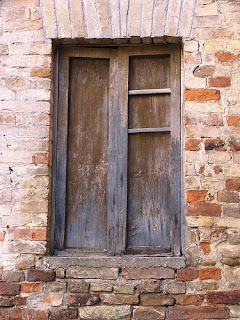
At Bellevue Homes, we believe that windows are the single most important component in a home. While many items contribute to making a home “beautiful” (kitchen cabinets, exterior trim, paint colors), and others contribute to making it “smart” (insulation, hot water heater, smart lighting controls), windows must be both smart and beautiful at the same time. To fulfill both these objectives at one time, windows are among the most sophisticated products in your home—and among the most expensive. Given this fact, builders are often anxious to reduce the cost of this line item, and a homeowner would do well to understand the key role windows plays in making a house a home.
Let’s talk Beauty first. As we’ve mentioned before, beauty is better observed than discussed, but certain characteristics of beautiful windows seem to repeat themselves in home after home. First, the size, design and arrangement of the individual windows need to “make sense” within the context of the whole house. A little English cottage with massive windows and modern trim will strike the eye as “off” somehow. Equally, the default usage of the Colonial window (you’ve seen them—a double-hung window with 9 small panes of glass above, and 9 matching panes below) works perfectly well in a Colonial home but is not nearly as endearing in homes of a different style.
Due to their expense, windows and their associated trim pieces are often targets of “value engineering”, where material quality and quantity is reduced to a minimum. The Bellevue homeowner is accustomed to high quality products, and will undoubtedly notice that our windows are appropriately substantial in all the right places, and our trim is meant to last. When you look at other houses, be sure to look hard at the windows, from inside and out—the quality of this one component of the house will likely speak volumes about the quality of the house overall.
A final point on glazing bars, the little pieces of wood molding (or commonly, vinyl) that divide, or appear to divide, a window’s glass into smaller panes. In very old windows, these bars were functional, allowing smaller pieces of glass to be combined into a larger window. Of course, with modern manufacturing methods, these glazing bars serve a purely aesthetic function, but it is an important function nonetheless. While we intellectually understand that the glass is a single pane and that the bars are only decoration, at a subconscious level we expect even decorative elements to look as if they could actually perform their original function. Glazing bars with the “substance” of masking tape can only detract from a house’s beauty; substantial glazing bars, which create an all-important shadow line in the mind’s eye, can make a great deal of difference in a home’s appearance.
Now let’s talk Smart. Windows perform a difficult task, providing the homeowner with a view of the outdoors without letting the outdoors—hot and humid, or blustery cold—inside. This is a lot to ask of two panes of glass in a wood frame.
During cold weather, windows are an invitation for warmth to escape; stopping this escape is a function of both advanced science and old-fashioned craftsmanship. Window science has brought us the double-pane window, trapping a layer of air (and in more advanced models, inert gas) to provide the insulation that glass by itself will not. Craftsmanship shows up both in the quality of the window’s materials (wood, for example, is a better insulator than vinyl), the quality of the product (better windows manage to open and shut tightly; lesser windows simply don’t), and the quality of the installation—the biggest potential air gap isn’t within the window itself, but in space between the window frame and the house. The quality of installation is hard to ascertain on a sunny day in May, but tends to be felt as an uncomfortable draft in December.
When the weather turns warm, your windows become an invitation for the sun’s heat to enter. While heat makes its way into your home in a number of ways, the most critical one relative to your windows is radiated heat, where the intense heat of the sun creates infrared waves that, unfortunately, can partially pass through glass. If the panes of glass were made up of aluminum foil, then these rays would be reflected back outside, but visibility would be substantially reduced! Fortunately, window science has come to our rescue once again—windows can now be coated with a very thin metal layer (known as a Low-Emissivity coating) that reflects the heat-producing infrared rays but allows light into a room, along with views out.
The National Fenestration Research Council (NFRC) has become a de facto certification standard for window manufacturers, making comparisons across window makes and models relatively easy. In a new house, the NFRC sticker should be visible on each window so the homebuyer can see what she is buying (windows made by a manufacturer not participating in the NFRC ratings are not worth considering). The numbers on the NFRC label not only enable you to understand which windows are “better”, with a little work, they can be translated into a dollars and cents figure, with better windows saving you money every month.
In the case of windows, as well as many other elements of your home, quality doesn’t cost; it pays.